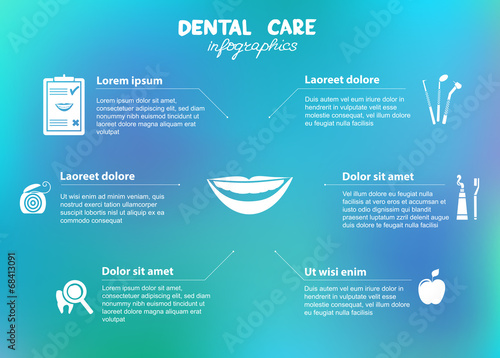The Development Of Dental Surgery: Cutting-Edge Innovations And Advancements Affecting The Field
The Development Of Dental Surgery: Cutting-Edge Innovations And Advancements Affecting The Field
Blog Article
Short Article Author-Demir Browne
Invite to the world of dental surgery, where developments and breakthroughs are shaping the future of the field! In https://www.digitaljournal.com/pr/news/ampifire/auckland-invisalign-clear-aligners-teeth-straightening-treatment-announced , you'll witness the transformative power of robotics, the sophisticated wonder of 3D printing, and the game-changing impact of minimally invasive techniques.
The future of dental surgery holds a guarantee of precision, performance, and boosted person results. With the help of advanced robotics, cosmetic surgeons have the ability to do complex procedures with greater precision and control.
3D printing modern technology is transforming the production of oral implants and prosthetics, offering personalized options that fit perfectly into each client's unique composition.
In addition, minimally intrusive methods are minimizing post-operative pain and healing time, permitting patients to go back to their daily lives sooner.
Prepare to explore the amazing technologies and advances that are reshaping the landscape of dental surgery!
Innovations in Robotics
One significant advancement in dental surgery is using robot modern technology, which enables accurate and effective surgical procedures. With the help of robot systems, dental doctors have the capability to carry out complicated surgeries with boosted precision, lessening the threat of human error.
These robot systems are outfitted with innovative imaging innovation and exact tools that make it possible for specialists to navigate with complex physiological frameworks easily. By using robot innovation, cosmetic surgeons can accomplish higher medical accuracy, causing boosted patient outcomes and faster recovery times.
Furthermore, the use of robotics in oral surgery enables minimally invasive procedures, decreasing the trauma to surrounding tissues and promoting faster recovery.
3D Printing in Oral Surgery
To improve the field of dental surgery, you can explore the subtopic of 3D printing in oral surgery. This cutting-edge modern technology has the prospective to transform the method dental specialists operate and deal with clients. Below are 4 vital methods which 3D printing is forming the area:
- ** Personalized Surgical Guides **: 3D printing enables the production of extremely accurate and patient-specific medical guides, improving the accuracy and efficiency of treatments.
- ** Implant Prosthetics **: With 3D printing, oral specialists can produce customized implant prosthetics that perfectly fit a person's one-of-a-kind anatomy, leading to far better results and person satisfaction.
- ** Bone Grafting **: 3D printing enables the production of patient-specific bone grafts, reducing the requirement for traditional grafting strategies and boosting healing and healing time.
- ** Education and learning and Educating **: 3D printing can be made use of to develop reasonable medical designs for instructional functions, allowing oral cosmetic surgeons to practice complicated treatments before executing them on individuals.
With its prospective to enhance accuracy, personalization, and training, 3D printing is an interesting development in the field of oral surgery.
Minimally Intrusive Techniques
To additionally advance the field of dental surgery, embrace the possibility of minimally intrusive strategies that can significantly benefit both doctors and individuals alike.
Minimally intrusive techniques are reinventing the area by reducing medical injury, reducing post-operative pain, and speeding up the healing process. These strategies involve utilizing smaller sized incisions and specialized instruments to perform procedures with accuracy and performance.
By utilizing advanced imaging technology, such as cone beam of light calculated tomography (CBCT), surgeons can accurately intend and execute surgical treatments with marginal invasiveness.
Additionally, using lasers in oral surgery enables exact tissue cutting and coagulation, causing decreased blood loss and minimized healing time.
With minimally invasive methods, people can experience much faster recuperation, minimized scarring, and boosted results, making it an important element of the future of oral surgery.
Conclusion
So, as you can see, the future of dental surgery is exceptionally appealing, with amazing developments and developments shaping the area.
From https://veneers-for-teeth84061.blogsuperapp.com/33555300/see-just-how-the-ideal-treatment-and-way-of-life-selections-can-prolong-the-life-of-your-dental-implants-beyond-the-ordinary-10-to-15-years in robotics to using 3D printing and minimally intrusive techniques, oral cosmetic surgeons are revolutionizing the means they provide treatment.
While some might worry about the possible expense related to these improvements, it is very important to bear in mind that these innovations inevitably boost individual end results and decrease recovery time, making them well worth the financial investment in the long run.
